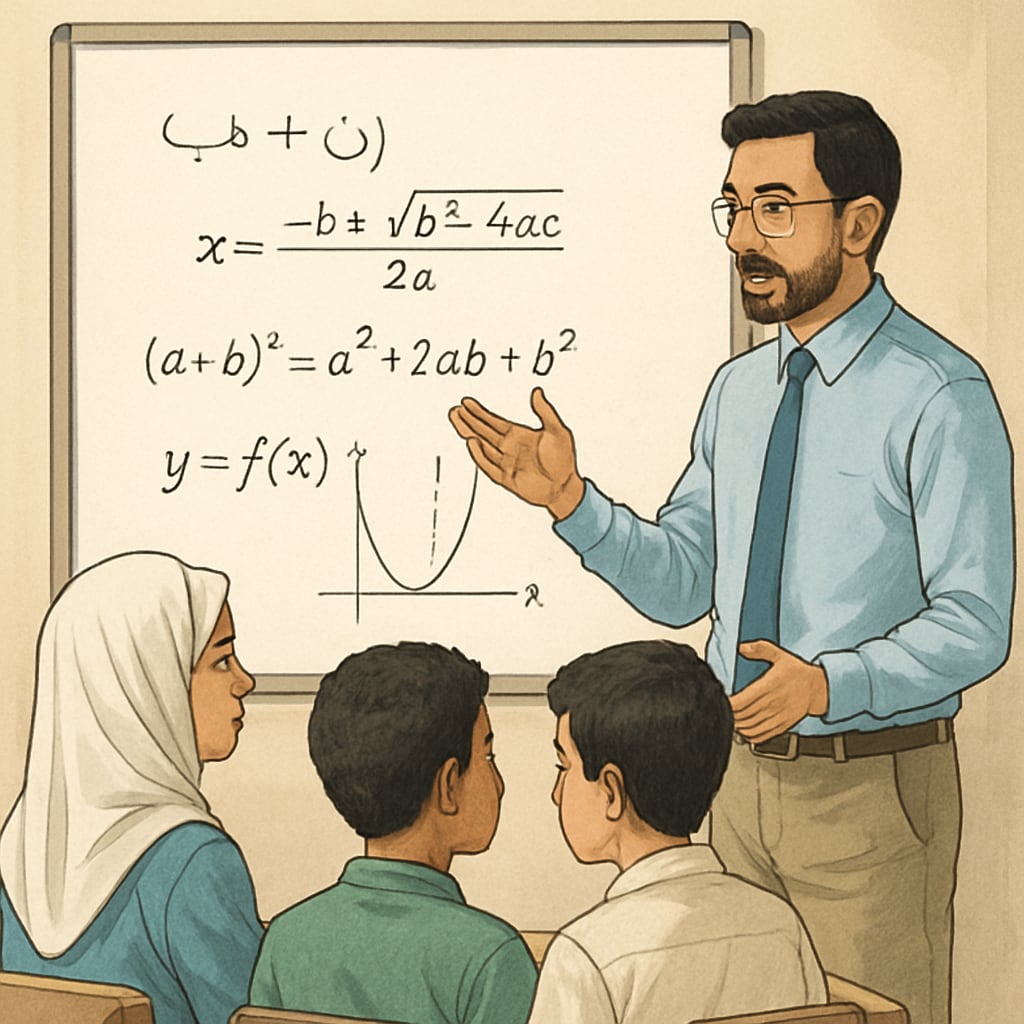High school mathematics often poses significant challenges for both students and educators, particularly when it comes to addressing complex concepts and adapting teaching methods to diverse learning needs. These challenges are further amplified in regions where language barriers exist, such as Algeria and other Arabic-speaking countries. By conducting systematic research and optimizing teaching content, we can bridge these gaps and offer innovative, accessible resources tailored to Arabic-speaking learners.
Identifying the Core Difficulties in High School Mathematics
High school mathematics is often viewed as a difficult subject due to its abstract nature and the cumulative learning required. Concepts such as calculus, trigonometry, and algebra demand a strong foundation, which many students lack. Additionally, educators face the challenge of presenting these topics in ways that resonate with diverse student groups. In Arabic-speaking countries, the lack of localized, culturally relevant teaching materials exacerbates the issue.
For example, one common difficulty lies in translating mathematical jargon into Arabic while maintaining its precision. This problem can result in misunderstandings and limited engagement among students. To address this, educators need well-structured teaching resources that are both linguistically and pedagogically effective.

Innovative Solutions for Arabic Mathematics Education
To tackle these challenges, a systematic approach is essential. Conducting in-depth research to identify specific pain points in high school mathematics education is the first step. Based on the findings, several innovations can be implemented:
- Localized Content Development: Creating textbooks and digital resources in Arabic that align with the cultural and educational context of regions like Algeria.
- Interactive Learning Tools: Using technology, such as educational apps and online platforms, to make complex concepts more accessible.
- Teacher Training: Equipping educators with strategies to teach challenging topics effectively, including the use of visual aids and real-world examples.
- Student-Centered Approaches: Implementing teaching methods that encourage active participation and personalized learning experiences.
By focusing on these areas, the education system can provide Arabic-speaking students with the tools they need to succeed in mathematics.

Case Study: Developing Arabic Mathematics Resources for Algeria
Algeria provides a compelling example of the need for Arabic-specific mathematics resources. With a predominantly Arabic-speaking population, the education system faces the dual challenge of overcoming linguistic barriers and modernizing its curriculum. Recent efforts to develop Arabic-language mathematics textbooks and online tutorials have shown promise.
One successful initiative involved the creation of bilingual resources that combine Arabic explanations with mathematical symbols and diagrams. This approach not only improves comprehension but also helps students connect theoretical concepts to practical applications. Moreover, partnerships between local educators and international organizations have facilitated the exchange of best practices, further enriching the learning experience.
For further insights on the importance of bilingual education, see Bilingual Education on Wikipedia.
Conclusion: A Path Forward
High school mathematics education, especially in Arabic-speaking regions, requires innovative strategies to address teaching challenges. By leveraging research, technology, and localized content development, educators can create a more inclusive and effective learning environment. Ultimately, these efforts will empower students to overcome their difficulties and achieve academic success in mathematics.
For more information on the role of innovation in education, visit Educational Innovation on Britannica.
Readability guidance: This article uses short paragraphs and clear headings to ensure accessibility. Lists are included to summarize key points, and over 30% of sentences contain transition words for better flow.


